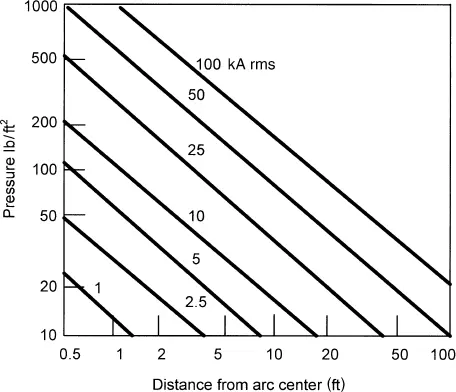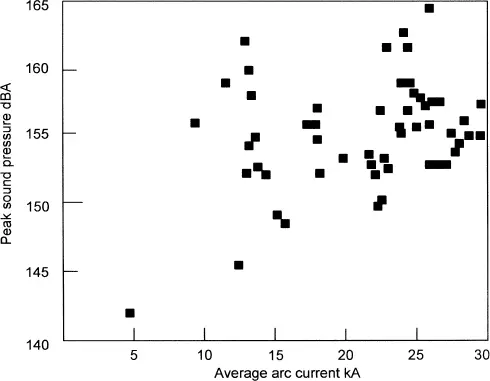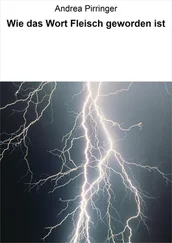1 ...7 8 9 11 12 13 ...20 This book is confined to the analysis of arc flash thermal damage and calculation of arc flash boundary, subsequently defined, according to IEEE 1584 Guide equations. The book concentrates on the various design, planning, and protection strategies by which the arc flash hazard can be reduced.
As opposed to arc flash, which is associated with thermal hazard and burns, arc blast is associated with extreme pressure and rapid pressure buildup. Consider a person positioned directly in front of an event and high pressure impinging upon his chest and close to the heart and the hazard associated with it.
The reports of the consequences of arc in air include descriptions of the rearward propulsion of personnel who were close to the arc. In many cases, the affected people do not remember being propelled away from the arc. The heat and molten metal droplet emanation from the arc can cause serious burns to the nearby personnel.
A substance requires a different amount of physical space when it changes state, say from solid to vaporized particles. When the liquid copper evaporates, it expands 67,000 times. This accounts for the expulsion of vaporized droplets of molten metal from an arc, which is propelled up to distance of 10 ft. It also generates plasma (ionized vapor) outward from the arc for distances proportional to the arc power. One cubic inch of copper vaporizes into 38.8 cubic feet of vapor.
The air in the arc stream expands in warming up from the ambient temperature to that of an arc, about 20,000 K. This heating is related to the generation of thunder by passage of lightning current through it. In documented instances a motor terminal box exploded as a result of force created by the pressure build-up, parts flying across the room [18]. Pressure measurement of 2160 lbs/ft 2around the chest area and sound level of 165 dB at 2 ft have been made.
The pressure varies with the distance from the arc center and the short-circuit current. Figure 1.3shows this relation based upon Lee’s classical work [12].

Figure 1.3. Pressure versus distance from the center of the arc, based on Lee’s work. Source : Reference [12].
The hot air vapor from the arc starts to cool immediately; however, it combines with the oxygen of the air, thus becoming the oxide of the metal of the arc. These continue to cool and solidify, and become minute particles in the air, appearing as black smoke for copper and iron and gray smoke for aluminum. These are still hot and cling to any surface these touch, actually melting into many insulating surfaces that these may contact. The oxide particles are very difficult to remove because surface rubbing is not effective. Abrasive cleaning is necessary on plastic insulation. A new surface varnish should be applied, or surface current leakage could occur and cause failure within days.
Persons exposed to severe pressure from proximity of an arc are likely to suffer short-time loss of memory and may not remember the intense explosion of the arc itself. This phenomenon has been found true even for high-level electrical shocks.
The PPE is currently designed and tested to address the heat energy hazard. The arc-rated FR (fire resistant), including face hood shields window materials, have been observed to provide protection for the molten metal splatter hazard. There have been considerations of pressure-wave hazard [12, 19] and noise hazard [20]. This has resulted in NFPA 70E specifying hearing protection.
Noise has been monitored with microphones to understand its relationship with arc parameters. The noise results from initial explosive expansion of air and formation of a plasma region between conductors. The noise in single-phase arc events is assumed to behave similarly.
Figure 1.4shows variations in noise level measurements, at a distance of 1.8 m from a variety of arc configurations—a scatter plot. These variations will narrow down if the test conditions were done in a fixed configuration. The arc ratings using PPE cannot be applied to hearing or pressure-wave protection. Figure 1.5shows that for lower levels of arcing current, the noise levels can even be higher. This figure shows measurements at 0.61 m (2 ft) from a variety of three-phase arc configurations. NFPA 70E, table 130.7(C)(16), in 2009 was revised and recommends hearing protection (ear if the test conditions were done in a fixed configuration. The arc ratings using PPE cannot be applied to hearing or pressure-wave protection. Figure 1.5shows that for lower levels of arcing current, the noise levels can even be higher. This figure shows measurements at 0.61 m (2 ft) from a variety of three-phase arc configurations. NFPA 70E, table 130.7(C)(16), in 2009 was revised and recommends hearing protection (ear canal inserts) even for category 0. In the 2002 edition, hearing protection was not specified for category 0 and 1 hazards. See also table 130.7(C)(15)a,b.

Figure 1.4. Peak sound pressure in dBA, at a distance of 1.8 m from a variety of arcing configurations. Source : Based on Reference [20].

Figure 1.5. Average arcing current versus the peak sound pressure dBA. Source : Based on Reference [20].
TABLE 1.1.Ballistics V 50Results for Arc-Rated Fabric Systems
| Multilayer Fabric Systems |
Arc Rating, cal/cm 2 |
Ballistic Layer |
Fabric System Weight, g/m 2 |
m/s |
Fragment Diameter, mm |
| Cotton with flame retardant |
100 |
No |
1424 |
186 |
5.6 |
| Aramid fabric system |
100 |
No |
932 |
210 |
5.6 |
| Aramid fabric system |
80 |
Yes |
780 |
280 |
5.6 |
| Aramid fabric system |
100 |
No |
881 |
191 |
7.8 |
| Aramid fabric system |
100 |
Yes |
922 |
240 |
7.8 |
Adapted from Reference [20].
If current limiting fuses are used, which operate in about 1/2 cycle or less, the arcing time is reduced and so also the noise levels—this relation is not so well defined, and additional testing is recommended [20].
Figure 1.5shows that noise sound pressure levels can exceed OSHA impulsive or impact noise level of 140 dB peak. Even at 1.8 m level the measured sound levels are well above small arms firing and without hearing protection, some individuals may suffer traumatic damage, including eardrum rupture [13]. A worker will be positioned closer than 1.8 m when working on energized equipment.
The shrapnel hazard has not been quantified or related to arc-flash parameters, but it is possible to measure shrapnel resistance of arc flash fabric systems and hood shield windows to standardized threats.
Arc flash hood windows and face shields must meet projectile impact requirements of ANSI Z87.1, which specifies that a 6.4-mm (0.25 in) steel ball projectile must not penetrate the shield window or face shield at a velocity of 91.4 m/s (300 ft/s). It does not consider irregular-shaped projectiles or velocities that may be from 150 to 180 m/s (500–600 ft/s) and accompany an arc fault event. Thus, testing of arc-flash PPE was conducted using fragments instead of bullets [20]. Table 1.1provides the test results. V 50signifies the velocity at which 50% of the projectiles penetrate the target specimen. This shows benefits of additional tightly woven para-armid ballistic fiber layer without weight increase.
Читать дальше















